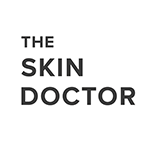What is Perioral Dermatitis?
Perioral dermatitis is a common skin condition characterized by the appearance of a rash around the mouth area. This condition primarily affects women between the ages of 16 and 45, although it can occur in men and children as well.

What causes Perioral Dermatitis?
The exact cause of perioral dermatitis is unknown, but it is believed to be associated with a combination of factors such as:
- Topical or inhaled corticosteroid use: Prolonged or excessive use of topical or inhaled corticosteroids on the face, can trigger the development of perioral dermatitis.
- Skin irritation: The use of some active ingredients in skincare or cosmetics can irritate the skin and contribute to the condition.
- Bacterial or fungal infections: Some studies suggest that certain microorganisms, such as bacteria or fungi, may play a role in the development of perioral dermatitis, although the exact relationship is not well understood.
- Weather changes: there is an increased in presentations with this condition during the winter months. This is due to cold weather outside and dry warm air inside affecting skin barrier which can lead to inflammation
- Stress: We find stress can exacerbate an episode of perioral dermatitis
Symptoms:
The primary symptom of perioral dermatitis is a rash that typically appears as small, red bumps or papules around the mouth. The rash may spread to the nose, cheeks, and chin. The affected area can be itchy, slightly scaly, and may sometimes have a burning or stinging sensation. In severe cases, the rash can become more widespread and develop into pustules which may become infected.
How can we help?
Treatment typically involves discontinuing the use of any potential irritants, such as corticosteroids or harsh skincare products. Your doctor may also prescribe topical medications, such as antibiotics or anti-inflammatory creams, to help alleviate the symptoms and control the inflammation. In some cases, oral antibiotics or other systemic medications may be necessary.
There are some other in clinic treatments that may help the recovery, such as LED therapy.

